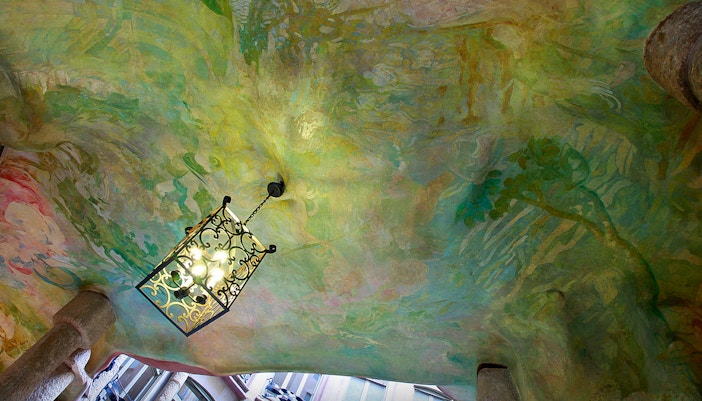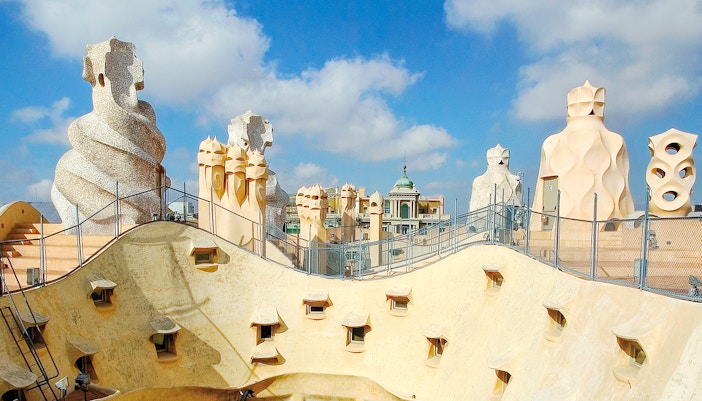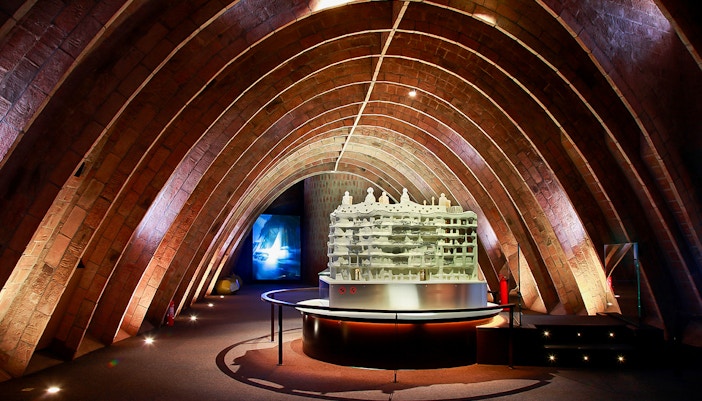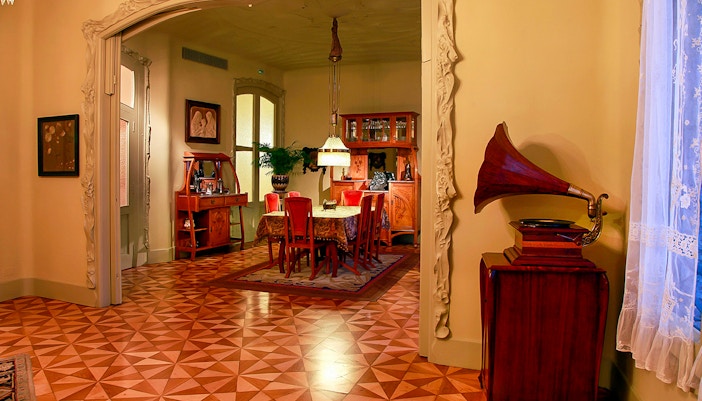The building's entrance hall is a striking space, with a sweeping staircase and a skylight that floods the space with natural light.
The hall is decorated with a series of mosaics depicting the four elements (earth, air, fire, and water), which were created by Gaudí's collaborator, Josep Maria Jujol. The entrance hall is located on the ground floor of the building and is accessed via a set of large, wooden doors.




















